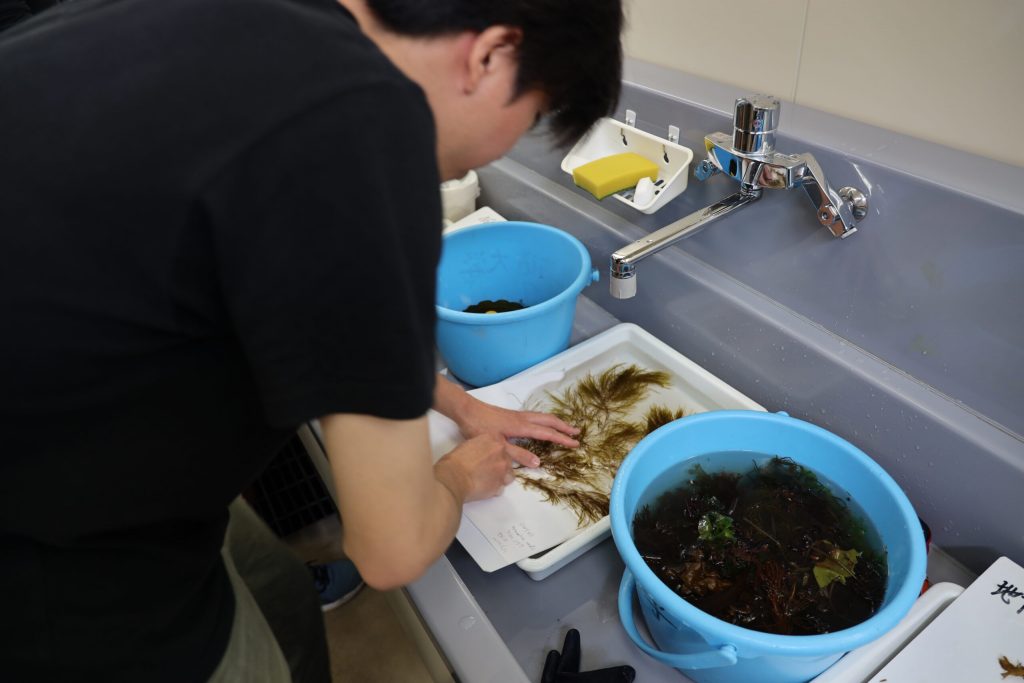The course International Course on Integrated Marine Biology and Ecology I was held between June 20 to 23, 2024, as part of the Hokkaido Summer Institute (HSI). It was held on site at the Muroran Marine Station, Field Science Center for Northern Biosphere, Hokkaido University, in the city of Muroran, Hokkaido. It is one of four closely related courses that deal with marine biology and ecology.
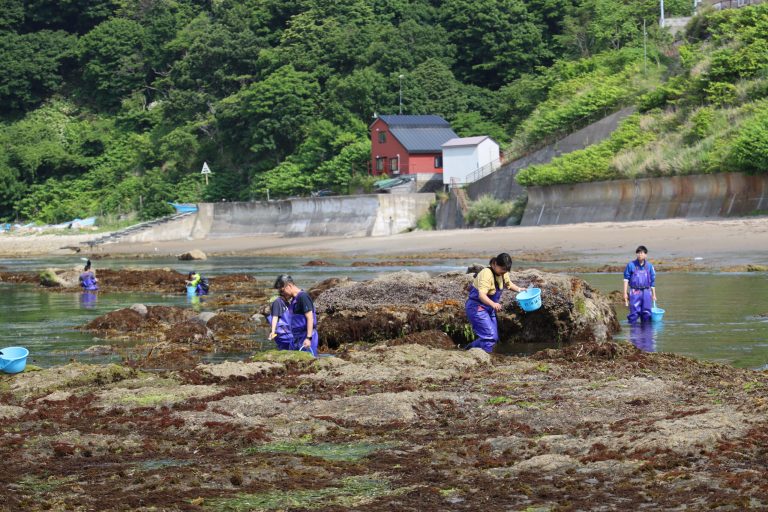
The course was organized by Professor Chikako Nagasato and Assistant Professor Kensuke Ichihara at the Muroran Marine Station. Professor Guiseppe Zuccarello of Victoria University of Wellington, New Zealand, and Professor Gwang Hoon Kim of Kongju National University, Republic of Korea, were invited lecturers, and there were eight student participants in total: six from Hokkaido University and two from Kongju National University. A student from Nagoya University and a faculty member from Kongju National University also participated in the course.
Over the four days of the course, participants gained experience with the collection and identification of algae (commonly known as seaweed), and with the process of analyzing phylogenetic relationships between species. Following an introduction to the Station and the lecturers on the first day, participants were eased into the remarkable world of phylogenetics. They were encouraged to pick a genus or family of related organisms for which they would construct a phylogeny.
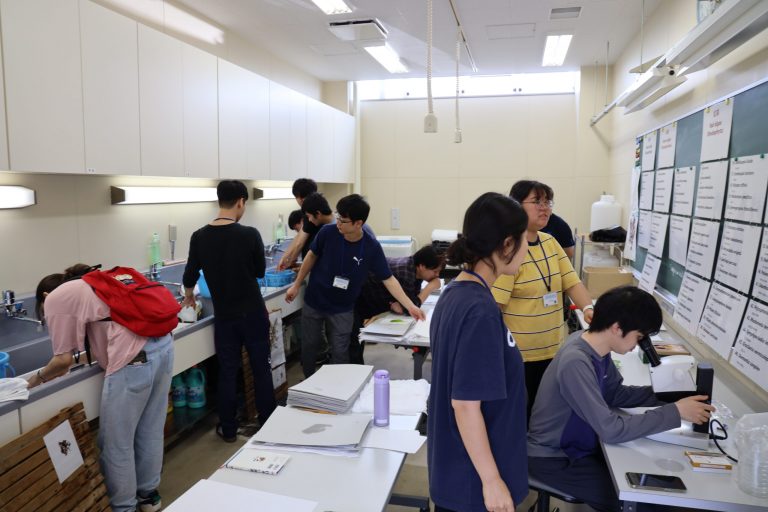
The second day of the course began with a visit to nearby Denshin-hama (Telegraph Beach). This beach, a short distance from the Station, possesses a large number of diverse seaweed which can easily be reached by wading into its shallow, protected waters. The lecturers and participants spent about 90 minutes gathering seaweed, including species of green algae, red algae and brown algae.
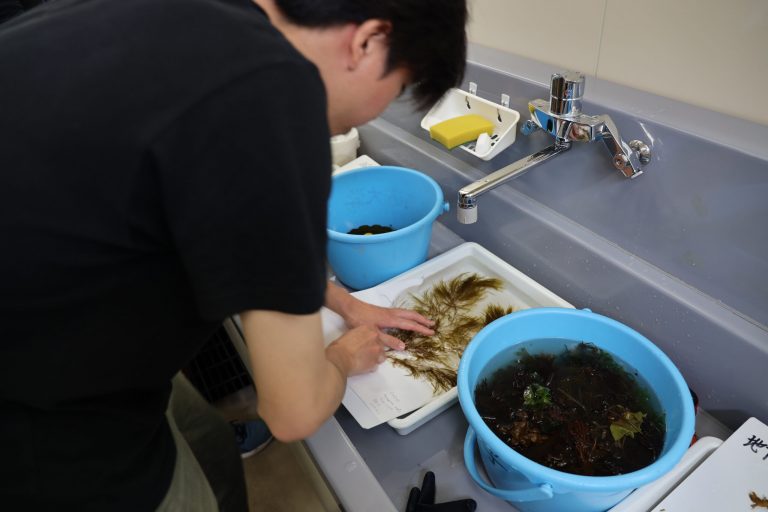
On returning to the Station, the participants learned how to process the samples they collected for long-term storage for archival purposes, such as herbaria, and for DNA extraction and sequencing. Each seaweed is carefully rinsed in water to remove any foreign matter. For herbarium specimens, the seaweed is first spread out on a sheet of cardstock and allowed to drip-dry. It is then covered with fabric to wick off any extra moisture, and finally placed in a stack upon which heavy weights are placed to compress the seaweed. For DNA extraction, small pieces of washed seaweed are cut off and placed in ziplock bags containing silica gel to dehydrate the material. In both instances, the specimens are carefully labeled with the species names, collection location and collection date.
“We have organized this course for many years prior to the HSI,” Nagasato said. “The HSI provided us with the support to expand the course, and to increase the number of participants and guest lecturers from outside Japan.”
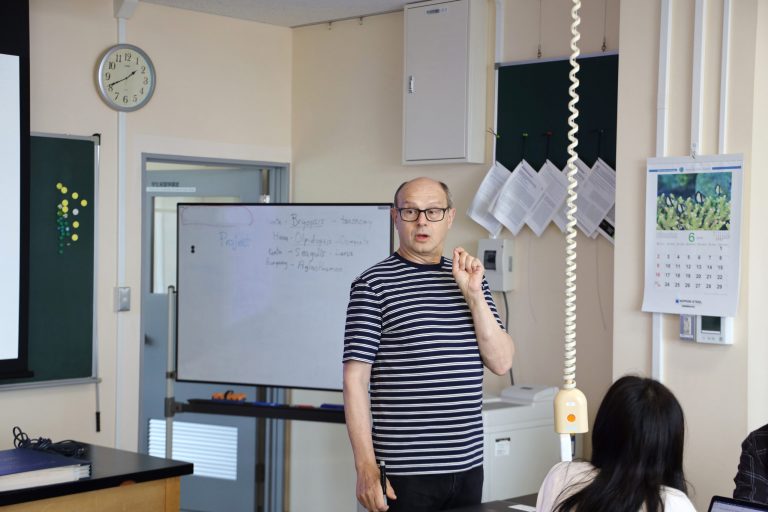
The rest of the course was occupied by the phylogeny projects assigned to the participants. After a short lecture, the participants carried out phylogenetic analyses on their chosen organisms. The process involved determining which genes are used to study evolutionary relationships; obtaining those gene sequences from the GenBank database; aligning the sequences, calculating the phylogeny and estimating the likelihood this phylogeny was supported; depicting the phylogeny in the form of a phylogenetic tree; and interpreting the results.
Zuccarello and Kim, both, spoke highly of the Station’s international reputation in algal cell biology, describing it as a dream destination for researchers in the field. “The Station uses both classical and cutting-edge techniques in cell biology, and has perfected techniques such as DNA microinjection for genetic manipulation of algae,” said Kim. “We have collaborated for many years, and I hope to continue doing so for many more years to come.”

“Many algae from Japan were historically introduced to New Zealand,” Zuccarello commented. “As a specialist in algal taxonomy and evolution, I hope to pursue collaborative research with the Station to study these algae.”
The application period for HSI 2024 is now closed. Courses are currently underway, and will continue until October 2024. The International Course on Integrated Marine Biology and Ecology I and its sister courses will be offered in future installments of HSI.
To learn more, visit the HSI website: https://hokkaidosummerinstitute.oia.hokudai.ac.jp/


